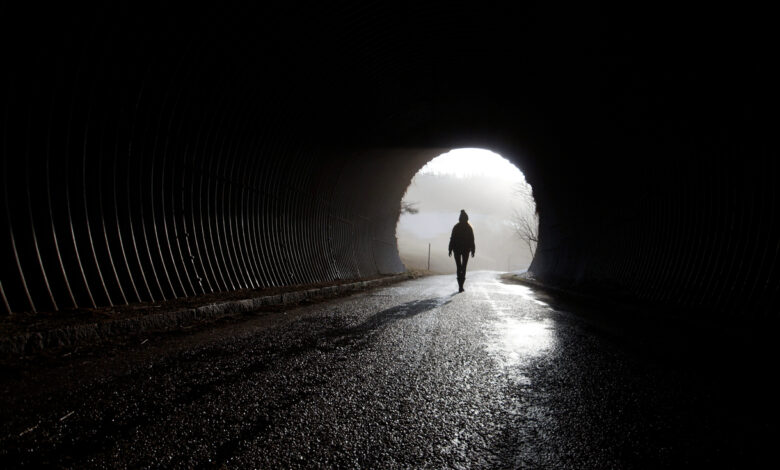In Search of Optimism

I have spent this week as I often do meeting with senior officials and smart observers in and around Washington. Candidly, the entire experience has left me a bit shell-shocked.
The level of pessimism and the depth of the pessimism I see has reached extremes I never thought possible in my lifetime. One well-known journalist with whom I spoke yesterday joked about moving to Australia before more seriously suggesting that the divisions in America and the threats to our democracy are so grave that he could only see dark scenarios.
A dinner with a diplomat ended up being dominated by conversations about whether America really was on the verge of a Civil War. While I had no problem saying it was not, it was more difficult to dismiss the divisions he cited within our society.
A conversation with a senior administration official spoke of low morale among Democrats who fear losses in the House and the Senate in November. They were also stung by setbacks to the Build Back Better initiative, the seeming inevitable failure of efforts to reform the filibuster so that voting rights legislation might pass, and sagging poll numbers for the president.
It is hard to simply dismiss all these. More disturbing, as reaffirmed in conversation after conversation, it is impossible to simply assert this is America, our institutions are resilient, and that in the end we can still count on the Constitution and the wisdom of the public to keep our freedoms safe. Many conversations took a “it can happen here” turn at one point or another and discussions of diminishing democracy, social fracture, rising authoritarianism and worse were commonplace.
Since Trump was elected, such conversations have not been rare. But recently, as the coup attempt turned into an anti-democracy movement that seemed to actually be gaining momentum, they have become commonplace.
So, as an old friend of more than three decades asked, what is the optimistic scenario?
When he asked, a long silence followed. Usually I can muster optimism. It did not come easily. But here are a few nuggets of optimism on which to hang your hopes:
- Joe Biden won the last election. By a lot. That suggests that a majority of Americans understand the threat posed by Trump and Trumpism and are, at least, guided by a modicum of common sense. They are still here. They still vote. Democrats have won the majority of votes in 1992, 1996, 2000, 2008, 2012, 2016 and 2020. That’s seven of the last eight elections.
- As recently as 2020, Democrats won a majority in the House and the Senate. That supports point one. And recent studies of the results of redistricting are more positive than we might have expected. And courts may well strike down some of the most extreme voter suppression laws.
- One negative factor is that COVID is souring voter moods across the country against the administration and the Democrats in general. (I’m pro-Democrat because they’re the party that’s fighting for democracy. The other is attacking it. If that seems binary and simplistic it also has the advantage of being true.) But COVID has a lower cost in blue states (look at the data) and in purple states (yep). That’s not just in terms of hospitalizations. It may also translate into a quicker end game in containing the pandemic and that in turn could translate into an advantage for Dems where it mattered.
- Benefits from the infrastructure package and the rescue package will kick in for Americans throughout this year, that too could help in November. So could organic recovery from COVID and both the resultant reduction in inflationary factors and in business stimulation (provided higher demand does not temporarily further spike inflation).
- President Biden has begun to use stronger language about the threat of voting restrictions and the attack on democracy. That’s a good thing. The party of incumbents only wins during midterms in war time or other moments of crisis. If he frames this as the state of emergency it is, that can drive turn out and frame this election choice for what it is, peeling back the veneer of “business as usual” the GOP would prefer act as cover for their authoritarian power grab.
- In the medium-to-longer term, I take some hope from the demographic trends that are changing America. While the move toward being a minority-majority country is what is driving some of the white supremacists in our midst, it is impossible not to note that the most diverse places in our country (cities) are also the most tolerant and the most progressive.
- The above trends are, of course, what the GOP and its base are fighting. But battles against progress, against the march of time, inevitably lose.
- In the interim, it is going to be tough, no doubt. Greater divisions between Red and Blue states are likely over the next decade or two. This will be the result of a right-leaning supreme court devolving more decisions to states and a GOP dominated Senate (see the Constitution for why that seems likely) weakens the federal government. But this also will reveal the stark differences in quality of life between the “Red” vision of America and the “Blue” vision and frankly, that can only be a good thing for those that would like to see a country that takes better care of its people, respects them all and seeks to invest in education and growth. (See COVID results in Red states…but also education levels, employment, quality of public service, consequences of crazy gun laws, etc.)
While nothing is guaranteed and deep divisions can weaken us and gutting democracy can produce long periods of rule unresponsive to underlying trends or the will of the people, the above are reasons I am hopeful that in the not too distant future we will put this ugly period in our rearview mirrors and return to something more like the hopes for a better America we have had most of our lives.

